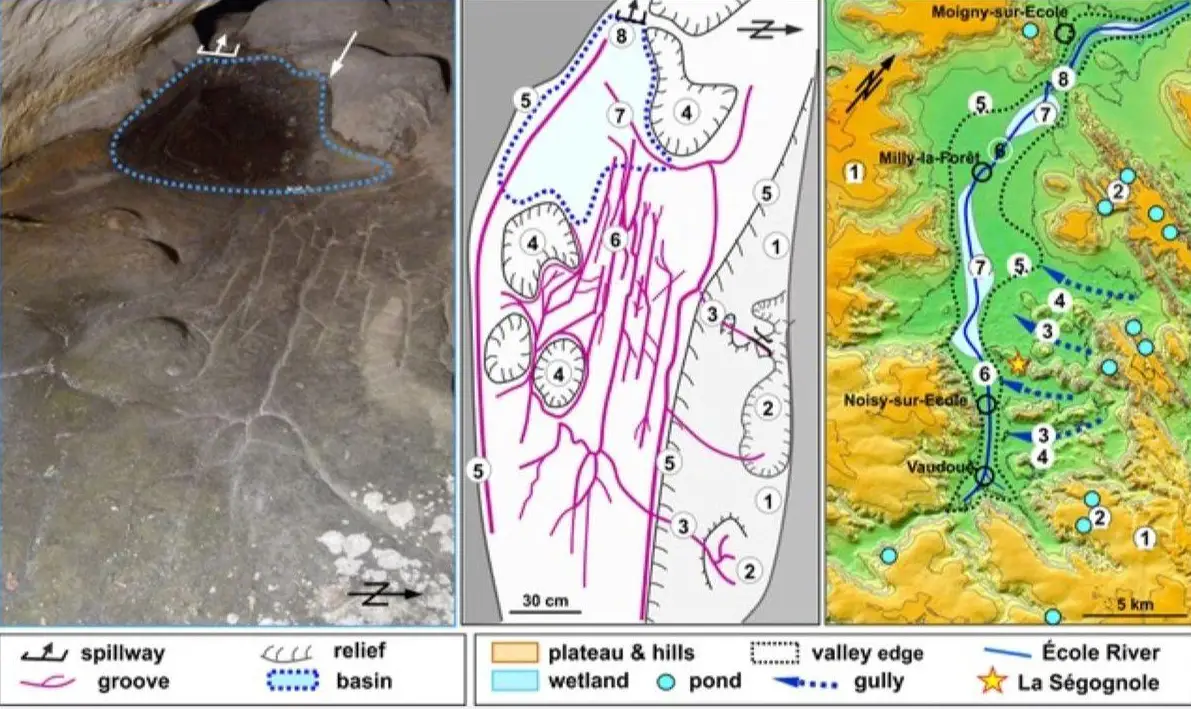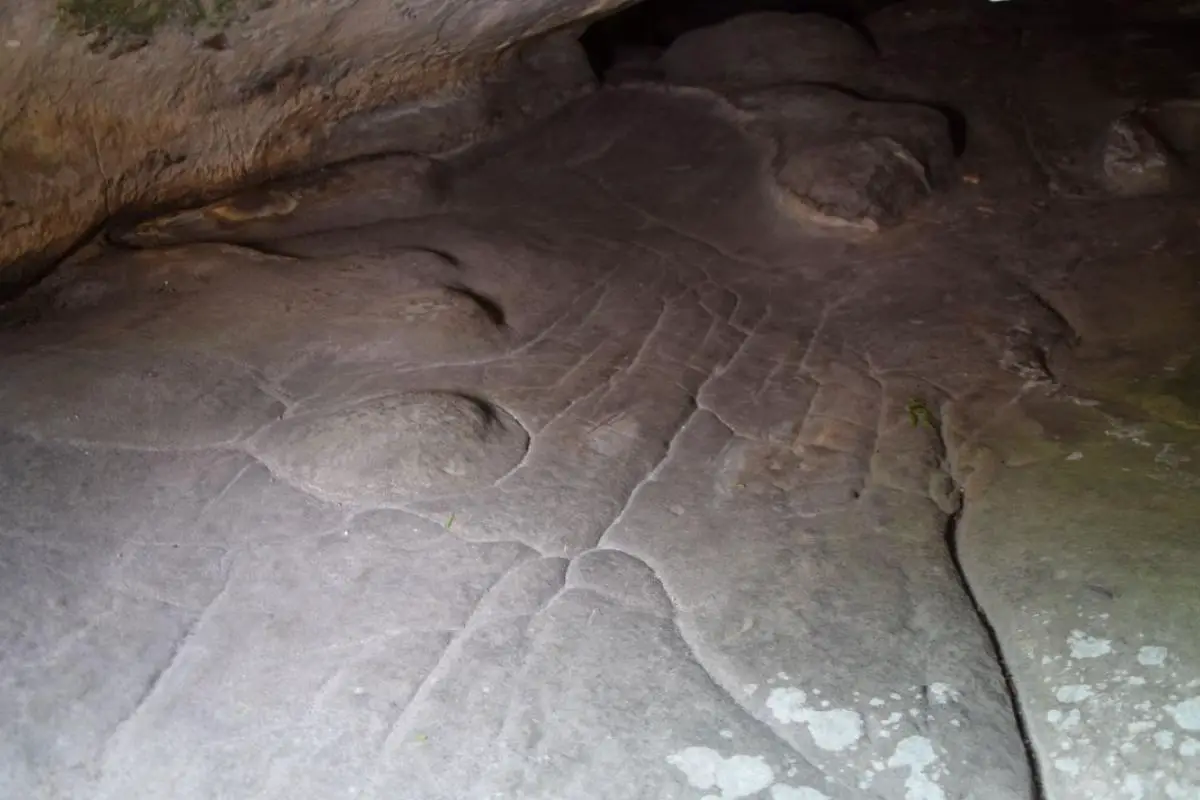Archaeologists from the Mines Paris – PSL Centre of Geosciences, working in collaboration with experts from the University of Adelaide, have discovered what may be the world’s oldest three-dimensional map at the Ségognole 3 rock shelter.
The Ségognole 3 rock shelter is located in the Paris Basin in northern France and contains Late Palaeolithic engravings of two horses flanking a female pubic symbol.
According to a new study published in the Oxford Journal of Archaeology, Palaeolithic people had intentionally shaped the sandstone rock in the shelter to resemble the female form, however, they have now identified a miniature representation of the surrounding landscape that forms a 3D map in the female sexual configuration.
The study authors suggest that the map was modelled to reflect the region’s natural water flows and geomorphological features approximately 13,000-years-ago.

Dr Milnes from the University of Adelaide said: “What we’ve described is not a map as we understand it today — with distances, directions, and travel times — but rather a three-dimensional miniature depicting the functioning of a landscape, with runoff from highlands into streams and rivers, the convergence of valleys, and the downstream formation of lakes and swamps.”
“Our study demonstrates that human modifications to the hydraulic behaviour in and around the shelter extended to modelling natural water flows in the landscape in the region. These are exceptional findings and clearly show the mental capacity, imagination and engineering capability of our distant ancestors, ” added Dr Milnes.
The study authors suggest that these hydraulic features likely held deep symbolic or mythical meaning related to water. Notably, the sexual representation and the miniature landscape model are only two to three metres apart, implying a profound, though now unknowable, connection between concepts of life and nature.
Header Image Credit : Dr Médard Thiry
Sources : University of Adelaide – https://doi.org/10.1111/ojoa.12316





